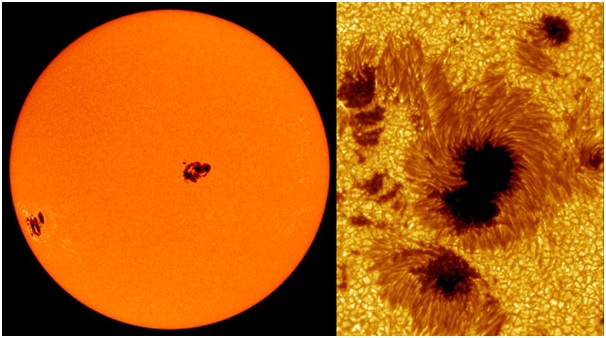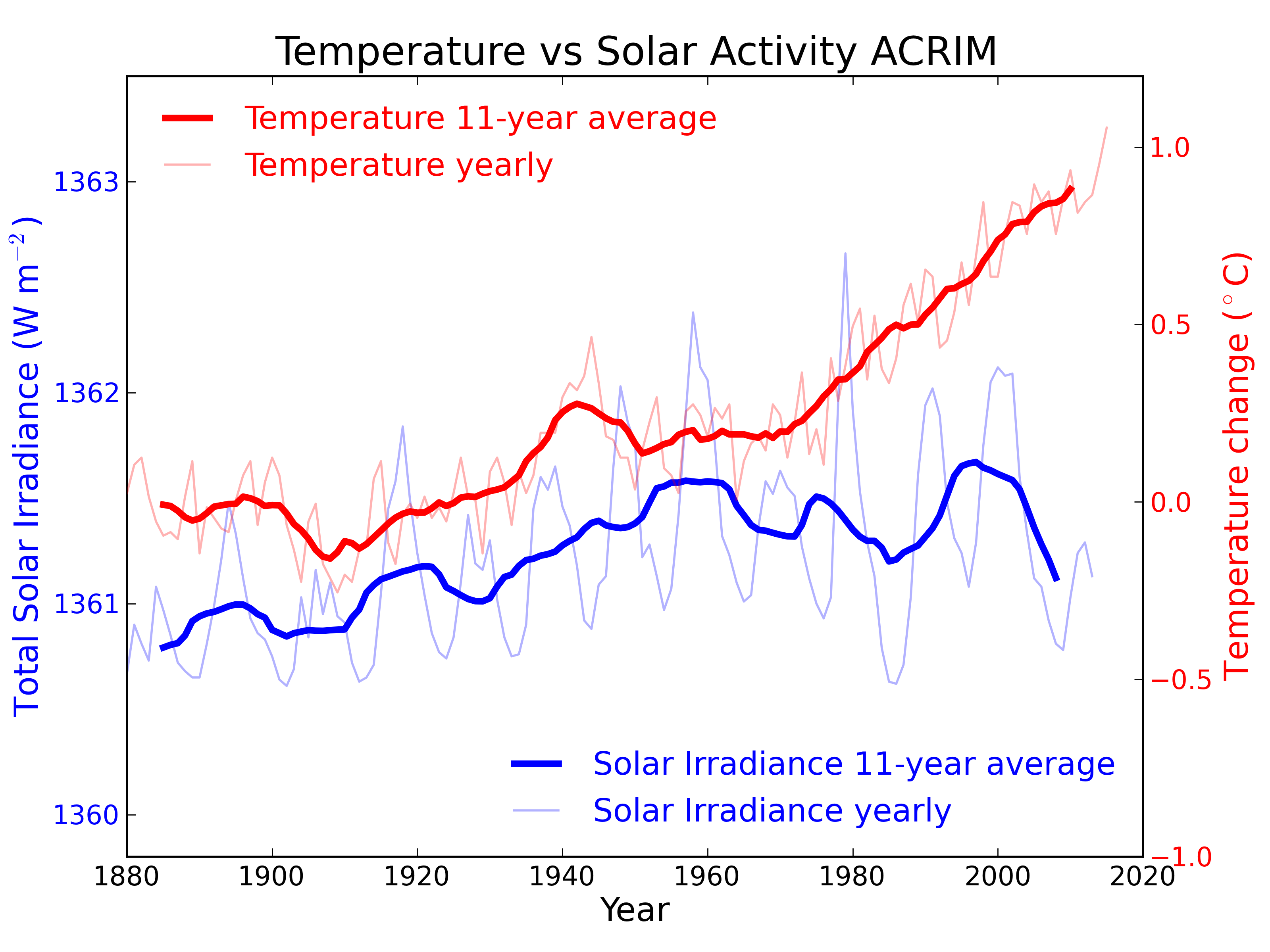
Lots of studies into the Sun-climate link have reported that recent changes in the heat output by the Sun are simply too small to explain much of the recent global warming. Even 5 years ago it was clear that Earth's temperature isn't tracking solar activity very well.
And now including data up to 2015, that pattern is even clearer. In each case the 2015 result is based on slightly incomplete data: up to end-November for temperature and mid-October for solar activity. It shows that in the 5 years since we first published a version of the figure below, Earth's surface has continued to warm despite declining solar activity.
Data sources: temperature, solar activity pre-1978, solar activity 1978-onwards.
The temperature record is from NASA and the solar heat output arriving at the top of Earth's atmosphere, the "Total Solar Irradiance" comes from two sources. From 1978 we have satellite measurements, in this case from PMOD (data here). Before that, the heat output was not measured directly, but instead it has to be estimated from measurements of sunspots, which look something like this.

Source: NASA
Sunspots happen where the Sun's magnetic field breaks through the surface. The dark areas of sunspots are cooler, but the glowing bits around are hotter, leading to an overall increase in heat output by the Sun. More sunspots are visible when the Sun is more active, and astronomers have been counting and recording sunspot numbers for centuries. Krivova et al. (2010) converted this record of sunspot counts into total heat output from the Sun, and this is where we got the numbers for the solar activity up until satellites began measuring in 1978 (data here).
You might notice some changes from an older version of this figure. The numbers for the amount of heat arriving from the Sun are different: the average is now about 1361 W m-2 instead of 1365 W m-2. This is because scientists identified a problem with older satellite data: their instruments didn't block all the reflected sunlight from Earth, so the older satellites measured a little too much sunlight (Kopp and Lean (2011)). The newer data correct for this, and it also affects the calculations linking sunspots to solar heating. In this figure we've done our own correction on the sunspot data by scaling it to match the newer satellite results during the period they both overlap.
To try and keep the graph clear, we only showed the results using the NASA GISTemp temperature record and the PMOD satellite solar activity record. Other records do exist: for temperature there is BEST, HadCRUT4 and Cowtan & Way's modification, NOAA and JMO. For solar activity there is ACRIM. For the warming since 1970, all of the records agree on the trend to within 5 % so the big picture is not changed by the choice of temperature record.
For solar activity, unfortunately the ACRIM data are only available to 2013. There is some disagreement about the data in the 1980s when different types of satellites have to be combined to fill in the record - although independent data from solar magnetograms and other sources suggest that PMOD is more accurate here. The ACRIM data have previously been favoured by those who link solar activity to a measurable amount of recent climate change (e.g. Scafetta and West (2005)). Although we favour the more up-to-date PMOD for our main figure, the ACRIM data are shown below. The idea that changes in solar activity explain recent temperature change seems to have a bit of a divergence problem.

Posted by MarkR on Tuesday, 5 January, 2016
 |
The Skeptical Science website by Skeptical Science is licensed under a Creative Commons Attribution 3.0 Unported License. |